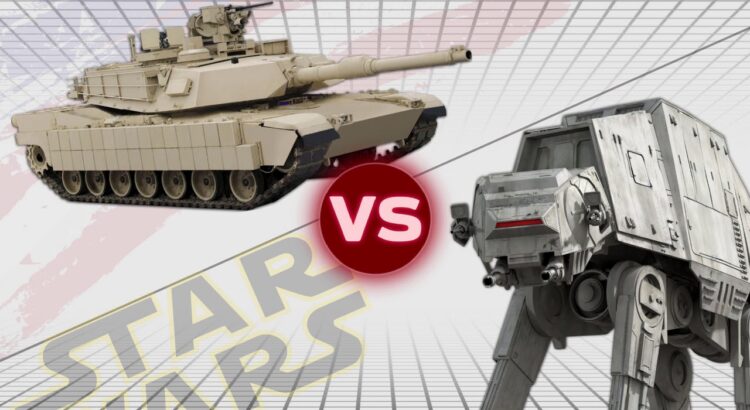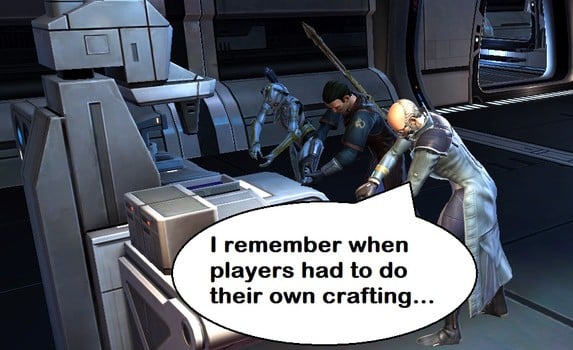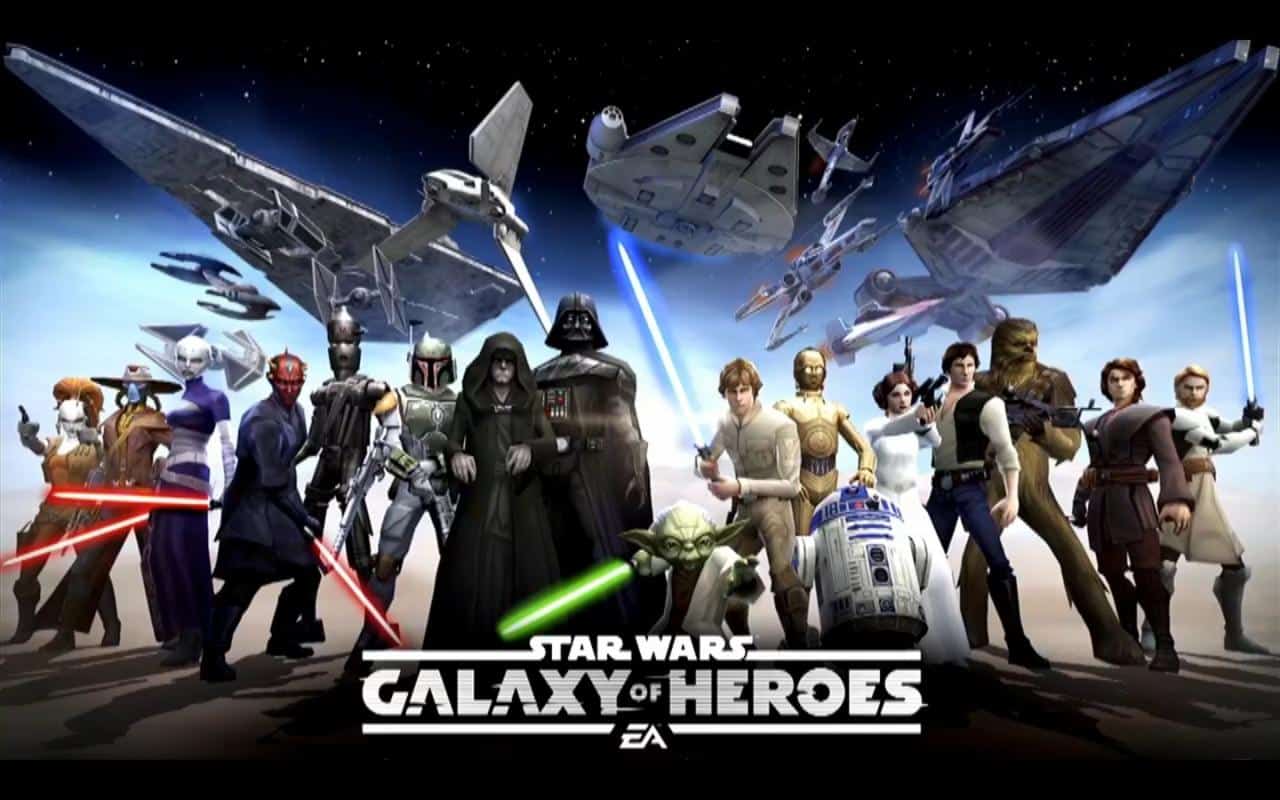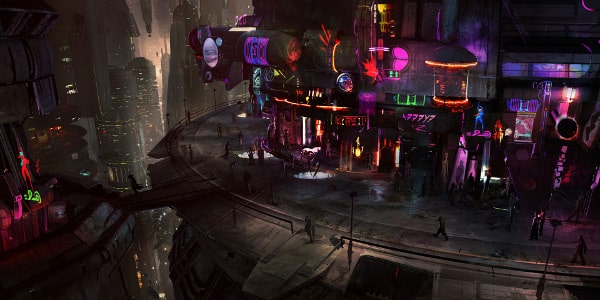In the galaxy of science fiction, the All Terrain Scout Transport (AT-ST) Walker from the Star Wars franchise stands tall, evoking an unmistakable image of futuristic warfare. This bipedal vehicle has become an emblem of the Galactic Empire’s ground forces, known for its distinctive design and all-terrain adaptability. Meanwhile, in the realm of reality, modern battle tanks like the German Leopard 2A7A1 and the American M1A2 SEP Abrams represent the zenith of current military technology. They are the product of decades of technological innovation, designed to dominate the battlefield with their formidable firepower, robust armor, and operational efficiency.
This comparative analysis will dissect these war machines’ costs, armament, armor, and operational efficiency, highlighting the stark contrast between science fiction and real-world military engineering.
1. Cost
AT-ST Walker
The cost of manufacturing an AT-ST Walker is not officially mentioned in the Star Wars canon, which makes a direct comparison challenging. However, some inference can be made using other data points in the Star Wars universe. One such reference is the Imperial Star Destroyer, a colossal warship in the Star Wars saga, with a known cost of about $636 billion USD. This figure factors in the Star Destroyer’s massive size, capacity to house thousands of troops and vehicles, and its equipped weaponry.
The AT-ST Walker, being a much smaller and less complex vehicle, would logically cost significantly less. However, even if the AT-ST cost 0,1% of an Imperial Star Destroyer, that would still be around $636 million USD—a staggering figure for a single combat vehicle. It’s crucial to remember that the Star Wars universe operates on a galactic scale, with a vastly different economy and technological capabilities than our own. These figures should therefore be considered speculative and used only for a rough comparative analysis.
Modern Battle Tanks
In the real world, the costs of the Leopard 2A7A1 and M1A2 SEP Abrams tanks are well-documented. The Leopard 2A7A1, a flagship tank of the German Bundeswehr, costs approximately $8.5 million USD. This price includes the tank’s state-of-the-art equipment, advanced combat systems, and precision weaponry.
The American M1A2 SEP Abrams, a cornerstone of the United States Army, carries a similar price tag of around $9 million USD. This cost accounts for the tank’s cutting-edge technology, composite armor, and powerful armament.
While these costs are substantial, they are several orders of magnitude less than the speculative cost of the AT-ST. It’s important to note that these costs are influenced by various factors like production scale, research and development costs, raw materials, and the technology involved.
2. Armament
AT-ST Walker
The AT-ST Walker is outfitted with a chin-mounted double medium blaster cannon, a concussion grenade launcher, and a blaster cannon on the right side. Its weapons are designed primarily for infantry support and are effective against lightly armored targets. They offer a reasonable rate of fire, allowing the AT-ST to lay down suppressive fire against enemy infantry and small vehicles.
The AT-ST’s armament reflects the Star Wars universe’s energy-based weaponry, a staple of science fiction. These weapons are lightweight, do not require ammunition in the traditional sense, and can cause significant damage to unshielded targets. However, they are less effective against heavily armored targets or fortified structures.
Modern Battle Tanks
The German Leopard 2A7A1 and the American A2 SEP Abrams tanks are heavily armed with a variety of munitions designed for modern warfare. The Leopard 2A7A1 is equipped with a 120 mm smoothbore gun capable of firing a range of kinetic energy penetrators and high-explosive anti-tank (HEAT) rounds. Similarly, the M1A2 SEP Abrams features a 120 mm smoothbore gun, in addition to machine guns for close-quarters combat.
These tanks can engage and destroy heavily armored targets at significant ranges, thanks to their advanced fire control systems and high-velocity ammunition. They can also withstand direct hits from similar munitions, courtesy of their layered armor protection. Modern tank ammunition is a mix of kinetic penetrators and explosive rounds, designed to pierce armor and destroy targets through sheer force and detonation.
3. Armor and Durability
AT-ST Walker
The AT-ST Walker’s armor is not explicitly defined within the Star Wars canon. However, it’s typically depicted as being resistant to small arms fire but vulnerable to heavier weapons like rocket launchers. The AT-ST’s design exposes critical areas like the cockpit and legs, making it susceptible to targeted attacks.
Furthermore, the AT-ST’s bipedal design, while providing a height advantage and better visibility, also creates inherent instability. The Walker can be toppled by uneven terrain, tripping hazards, or targeted attacks on its legs—an Achilles’ heel exploited by the Rebels in the Battle of Endor.
Modern Battle Tanks
In stark contrast, the Leopard 2A7A1 and the M1A2 SEP Abrams are armored fortresses. The Leopard 2A7A1 is protected by advanced modular composite armor, which can be upgraded and replaced based on mission requirements. This armor provides excellent protection against a wide range of threats, including kinetic energy penetrators and HEAT rounds.
The M1A2 SEP Abrams boasts a similar level of protection with its composite Chobham armor. This layered armor comprises various materials designed to absorb and deflect the energy of incoming rounds, protecting the crew inside. The tank’s design also emphasizes crew survivability, with features like automatic fire suppression systems and separate ammunition storage with blowout panels.
4. Operational Efficiency and Adaptability
AT-ST Walker
The AT-ST Walker’s operational efficiency is a mixed bag. On the one hand, its bipedal design allows it to traverse a wide variety of terrains, living up to its name as an All Terrain Scout Transport. This versatility can provide a significant advantage in complex environments like forests, where traditional wheeled or tracked vehicles might struggle.
However, the AT-ST’s design also brings several disadvantages. Its tall profile makes it an easy target on the battlefield, and its bipedal movement is inherently less stable and slower compared to wheeled or tracked propulsion. Its vulnerability to being tripped or toppled represents a significant operational risk.
Modern Battle Tanks
Modern tanks like the Leopard 2A7A1 and M1A2 SEP Abrams are designed for operational efficiency and adaptability. Their tracked design enables them to traverse various terrains, from desert sands to muddy fields. They are also capable of fording water obstacles and climbing steep inclines.
Despite their heavy weight, these tanks are remarkably agile, capable of reaching high speeds on both off-road and paved surfaces. Their powerful engines, advanced suspension systems, and responsive steering make them formidable on the battlefield.
Conclusion
In conclusion, the AT-ST Walker from Star Wars and modern battle tanks serve as fascinating subjects of comparison, each embodying the distinct characteristics of their respective universes. Despite the AT-ST’s formidable portrayal in a galaxy far, far away, it is evident that real-world modern battle tanks outshine in terms of practicality, durability, and technological sophistication. Nevertheless, the AT-ST remains an iconic symbol of cinematic military might, demonstrating the power of imagination and creativity in the realm of science fiction. While reality and fiction follow different rules, both entities indeed offer valuable insights into the evolution of warfare technologies, and in their own unique ways, capture the essence of their individual contexts.








